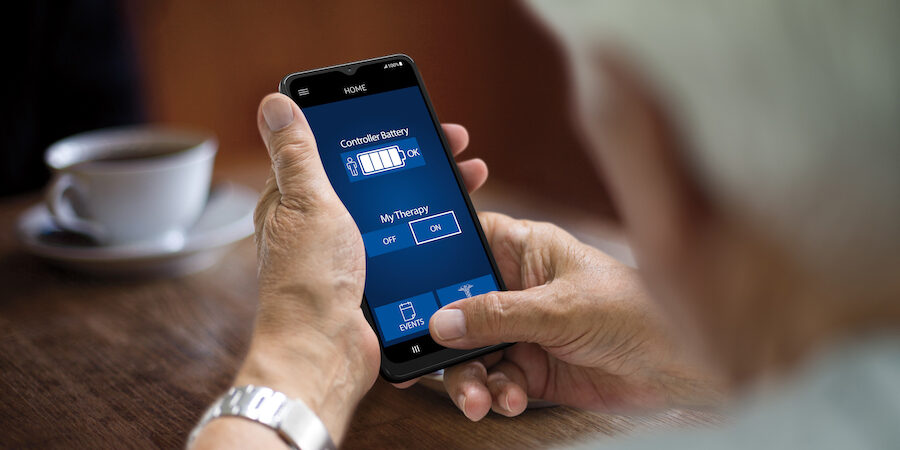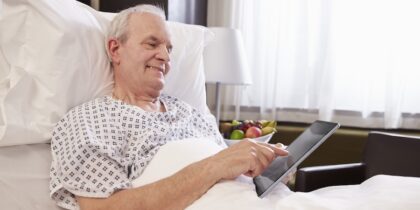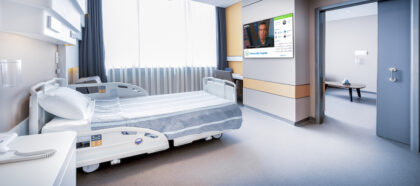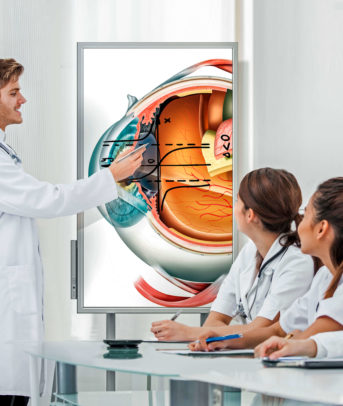Home is where the heart is, and increasingly, it’s where the health is, too. With the rise of smart home health technology, the connected home has become a vital hub for monitoring and managing health, extending far beyond traditional devices like heart monitors. Today, advanced solutions enable everything from tracking cardiovascular health to monitoring neurological conditions, all from the comfort of home.
This shift not only empowers individuals to take control of their well-being, but it also revolutionizes care delivery, reducing costs and enhancing outcomes.
An aging population, a growing need
The use of remote patient monitoring (RPM) technology surged during the COVID-19 pandemic as healthcare providers sought ways to treat and track patients from a distance. And that trend has only continued, thanks in part to an ongoing major demographic shift in the United States.
The most recent U.S. census revealed a rapidly aging population, with one in six Americans age 65 or older. This so-called “geriatric population” reached 61 million people in 2024, according to the latest estimates.
“The number of states and counties where older adults outnumber children is on the rise, especially in sparsely populated areas,” Lauren Bowers, chief of the Census Bureau’s Population Estimates Branch, explained in a press release from the bureau.
It’s important to note that older adults overwhelmingly report that they prefer to “age in place,” remaining in their homes and communities for as long as possible. This, in turn, contributes to a rise in demand for remote monitoring and management for long-term and chronic conditions. The global remote patient monitoring market size is expected to grow to $57.5 billion by 2034. Chronic diseases, such as diabetes and cardiovascular conditions, are significant factors driving market growth.
Small devices, big impacts
“Remote patient monitoring” (RPM) is an umbrella term used to describe a wide collection of cutting-edge health tech, including devices like connected blood pressure monitors, glucose meters and pulse oximeters. The number of patients using RPM devices is projected to reach 115 million by 2027, and it represents a cost-efficient option for chronic disease management.
Research has shown that combining the use of home monitoring devices with routine in-person check-ins helps keep patients from returning to the hospital or visiting the emergency room, reducing healthcare expenses. The study showed that these monitoring systems work well in everyday settings, proving they could be widely used to help people manage long-term health conditions.
The American Medical Association has been a strong proponent of telehealth and RPM, citing its potential to reduce unnecessary emergency department visits and ease the burden on healthcare providers. Most importantly, these devices have been demonstrated to improve patient outcomes. By monitoring vital signs and other health metrics, RPM systems can detect subtle but often significant changes key to the proactive management of chronic conditions like hypertension and diabetes.
Personalized care, anywhere
By empowering patients to actively manage their own health, connected devices can increase treatment compliance and improve quality of life. This is especially true when it comes to physical therapy or rehabilitation for patients recovering from surgery.
Connected devices can now provide at-home, guided rehabilitation exercises with real-time feedback on form and range of motion. And sensor-based systems (that attach to a patient’s body) are able to monitor exercise performance and progress in physical therapy.
The Department of Veteran’s Affairs conducted a remote monitoring program for veterans recovering from orthopedic procedures, reporting a 28% improvement in functional outcomes compared to standard care.
As the technology continues to advance, the impact and influence of these devices will only grow. It’s all part of a future where the connected home is no longer just a dwelling—it’s a cornerstone of modern healthcare, transforming how we care for ourselves and our loved ones. After all, there’s no place like home.
Explore how to improve the patient experience and outcomes with Samsung’s full range of digital health solutions.







